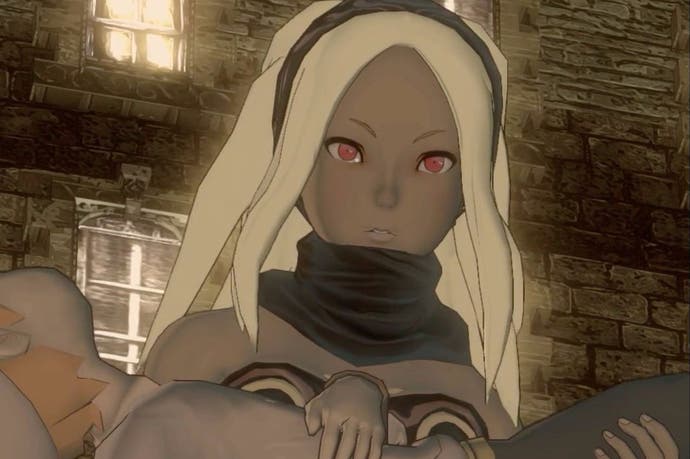Face-Off: Gravity Rush Remastered on PS4
Bluepoint on point - and out now in the West.
We originally ran this article when Gravity Rush Remastered was released in Japan a couple of months ago. It's out now in the West and it's a superb release, so we're republishing this article today to remind you just how good it is.
Sony's Japan Studio is hard at work developing Gravity Rush 2 for PlayStation 4 - a potentially risky project bearing in mind that the series debut launched only for PlayStation Vita. To raise awareness for the franchise, remaster specialists Bluepoint Games - fresh from its remarkable work on Uncharted: the Nathan Drake Collection - are handling a PS4 version of the handheld original. Set for release in Europe and North America in February, the game has already launched in Japan and other Asian territories and we couldn't wait to take a look.
Gravity Rush remains one of the best Vita titles available, with an intuitive control system taking advantage of the system's core interfaces - players swipe the touch-screen to evade attacks, while using the gyroscope to aim and move in zero gravity. Combined with the unique cel-shaded aesthetic, the developers at Japan Studio tailored the experience to the Vita's strengths in order to deliver something special. In remastering the title for PlayStation 4, Bluepoint Games faces a stern challenge - low resolution visuals originally designed for a five-inch screen need to work on large 1080p flat-screens, while the innovative control system also has to transition across effectively to Dual Shock 4.
The good news is that many of the Vita-specific features translate very well onto PlayStation 4 and in many ways, Bluepoint's extensive graphical upgrade is even more dramatic than its work in the Nathan Drake Collection. The majority of the core artwork is substantially enhanced, with enormous increases to the detail level of the original assets - both in terms of texture work and geometry.
The game world is far richer as a result, packed with intricate detail that simply wasn't present on the Vita original. Bluepoint is renowned for going the extra mile in its remastering work, and in this respect, Gravity Rush doesn't disappoint, featuring higher polygon counts and richer geometric detailing. For example, window ledges that appear as a flat texture in the Vita version are now realised as full three-dimensional objects on PS4. Brickwork is more intricate, more refined, while environments offer higher levels of background animation. Characters also appear smoother too, with additional geometry used to round off edges and add extra details to clothing. The black outlines that give the game its comic-book style appearance are more defined too, better suited to the much higher resolution offered by PlayStation 4.
The presentation is given further refinement by deploying additional GPU effects - in addition to its much higher pixel count, Gravity Rush now features accomplished post-process anti-aliasing absent from the Vita version. Anisotropic filtering adds yet more clarity to the visuals, while helping to bring out the most from the new artwork. By comparison, a simpler trilinear implementation is used on the Vita version, and the results aren't great - textures blur heavily when viewed at an angle.
On top of that, higher resolution shadows are deployed, along with the use of bloom deployed more liberally across various scenes - the effect is present around windows and street lamps on PS4, as opposed to just simulating HDR-like effects in the Vita original.
Elsewhere, Bluepoint Games use the same style of LOD set-up as in the Vita original, with scenery transitioning from detailed objects to simpler cell-shaded structures before fading completely as the camera moves away. This helps to avoid obvious pop-in on distant objects seen in many games while also enhancing the comic book aesthetic. The use of higher quality artwork helps to preserve detail further out on the PS4, so can still make out the patterns on brickwork as the scenery begins to fade away.
The way LODs are handled on both platforms also helps to minimise the amount of pop-up present while exploring, though transitions between low and high quality art are not completely eliminated. NPCs tend to pop-in during cut-scenes on both platforms, but these are more quickly loaded in on the PS4. It's a minor blemish on an otherwise impressive presentation for title originally design for a handheld system.
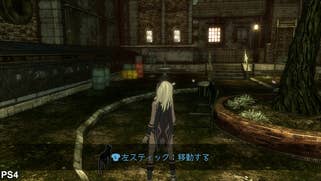
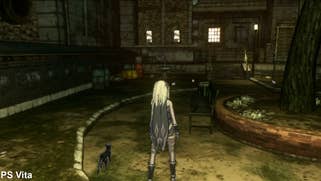


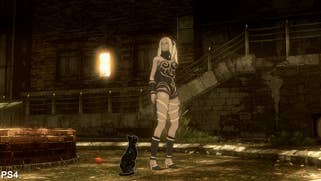

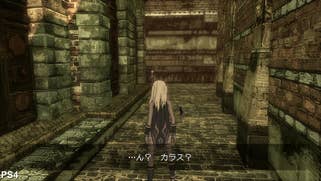
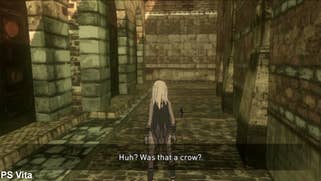


As you can see in the comparison video above, the move to 1080p resolution also has a profound effect here - and that's not surprising. The original Gravity Rush operated at 720x408 on PlayStation Vita, so the move to full HD offers up a remarkable 7x increase to resolution. Combined with the new artwork and geometry, the increase to overall fidelity is often stunning.
Overall, the visual enhancements here are quite remarkable - Bluepoint has managed to turn a handheld game that's almost four years old into a beautifully stylised, rejuvenated PlayStation 4 title. The good news is that Gravity Rush also holds up from a gameplay perspective too - and the Dual Shock 4 hardware has the appropriate features to capture all of the handheld original's control features.
The inclusion of gyroscope and touchpad on Dual Shock 4 mean that most the Vita's motion and touch-based actions translate seamlessly on to the controller without any dramatic changes. Tilting the controller is used to turn the camera when in zero gravity mode or on the map screen, while swiping on the touchpad is used to dodge enemy attacks. These actions are also mirrored on the L2 and R2 triggers if you'd rather control Kat in a more traditional manner. In fact, you don't actually have to use any of the Dual Shock 4's motion or touch features at all, although they feel like a natural fit for the game based on how they were deployed in the Vita original.

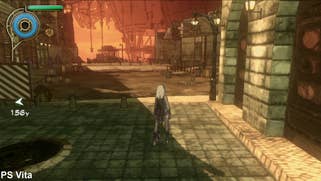
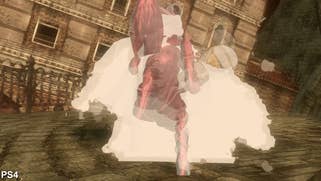
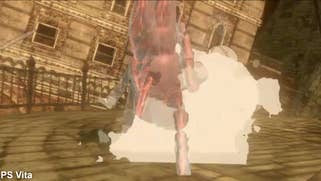




Moving onto performance, and on the Vita Gravity Rush targets 30 frames per second with v-sync enabled. Performance holds up fairly well here: there are some visible drops in frame-rate at times, causing short bursts of judder, but nothing that heavily intrudes on the gameplay on a regular basis. It's a solid experience on original hardware, but the improvement is revelatory on PlayStation 4.
Free from the limitations of Vita hardware, Bluepoint Games delivers a full 60fps on PlayStation 4, providing an experience that looks and feels a lot slicker than the Vita original. Transitions between some cut-scenes give way to some minor frame-rate drops, but otherwise performance remains locked at the target frame-rate without any disruptions during gameplay.
As you might expect, the boost in performance dramatically improves the fluidity of movement over the Vita original. The improvement to gameplay is tangible: controls feel snappier during faster-paced action scenes and it's generally easier to keep track of Kat when floating around in the air. Ultimately, doubling the frame-rate makes for a better all-round experience where gameplay feels more effortless - and this really helps to enhance the quality of the touch and motion control options, if you choose to use them.
Gravity Rush Remastered: the Digital Foundry verdict
In some aspects, Gravity Rush Remastered is an even more impressive achievement than Uncharted: the Nathan Drake Collection. Naughty Dog's original PS3 games were designed to look great on a modern HDTV, while the display target for Gravity Rush was considerably less ambitious. To bring the game to PS4 and for it to work this well is a considerable achievement, and in Bluepoint Games, Sony clearly chose the right team for the job.
With its native 1080p presentation, reworked assets, higher resolution effects and 60fps gameplay, Gravity Rush is reinvigorated for PlayStation 4. On top of that, the unique gameplay features of the original translate well to the Dual Shock 4 controller, and this keeps the experience feeling authentic - despite running on a completely different hardware platform. Gravity Rush is a great PlayStation 4 conversion that should go down well with existing fans of the game, while providing a great jumping-on point for those new to the title.
